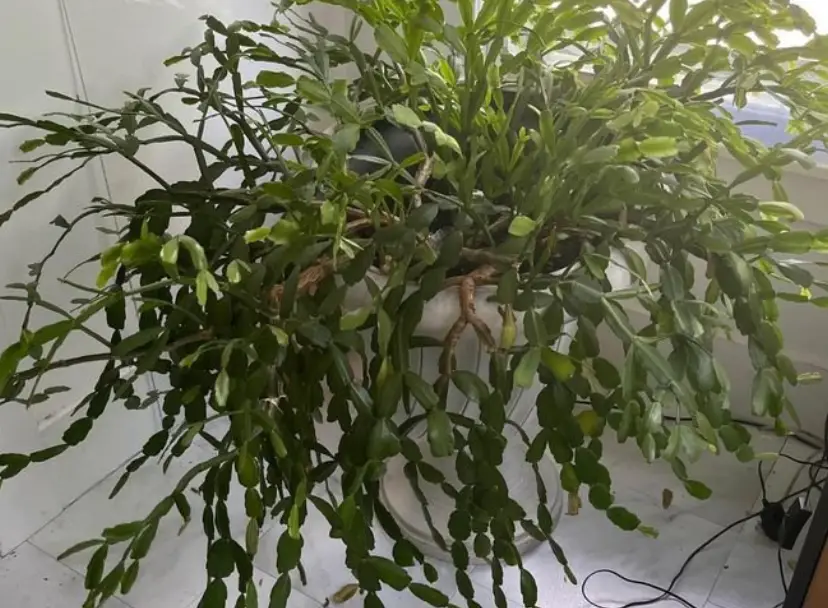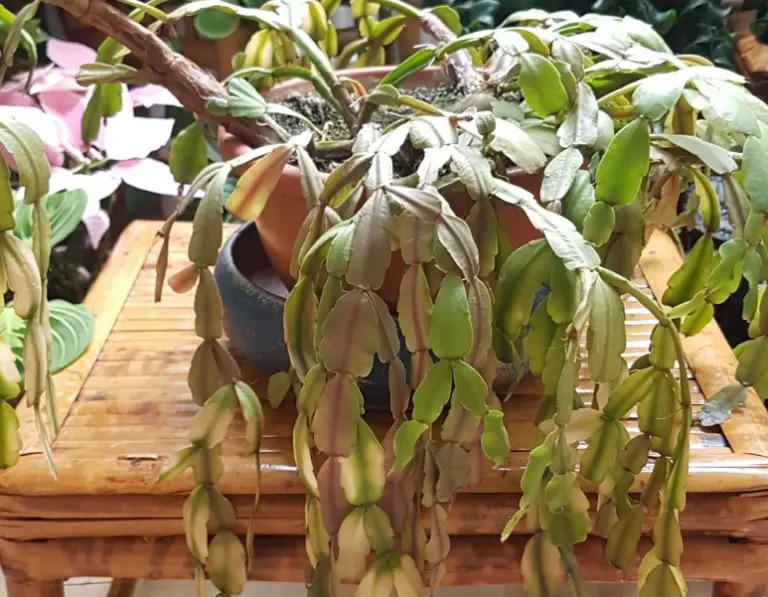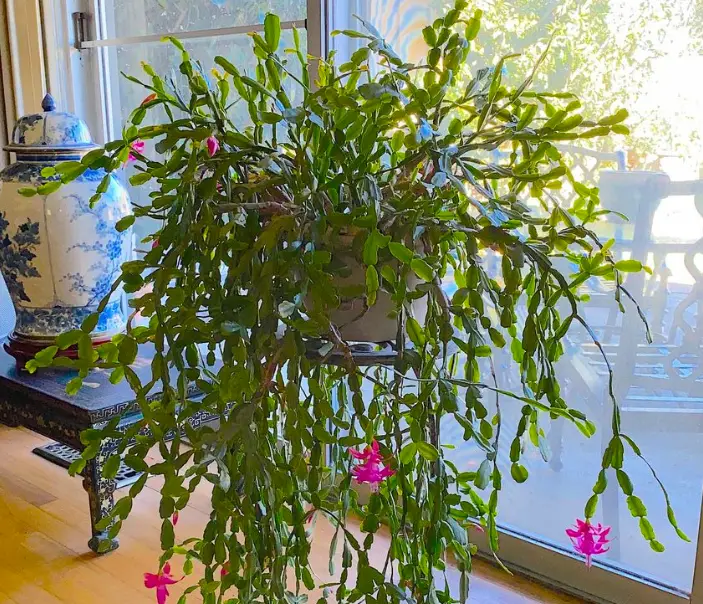Christmas Cactus Woody Stem? What to do Next
Christmas cactus is a popular house plant that blooms over the winter holidays. This plant has fleshy green segments that join together to form stems. When blooming, flowers appear at the tips of the stems.
When aging, a Christmas cactus undergoes several changes, particularly in appearance. The stems can become woody and less flexible, and the plant may not produce as many flowers as it did when it was young.
However Christmas cactus woody stem could also be a sign of distress resulting from the poor conditions.

Christmas cactus woody stem – Reasons
Nothing to worry about when the stems of your aging Christmas cactus are getting woody. It is commonly a sign of cactus corking, indicating that the plant has been here for some time and is heading into its golden years.
Excessive corking in a cactus may also indicate stress from poor growing conditions. Overexposure to direct sunlight, underwatering, extreme temperatures, and pests are potential reasons for a cactus woody stem.
Older Christmas cactus plants may have several problems, especially if they have grown huge. You should be concerned with the following issues:
Stems splitting
When the woody stem of your holiday cactus is overwhelmed by the massive weight of the plant, the stems will break apart and split the plant. This will typically expose your plant to fungal and bacterial infections.
Severe rootbound
Although Schlumbergera bridgesii likes it when roots are tightly bound in a pot, it becomes an issue when roots get excessively tangled and cannot take up nutrients efficiently.
You will know that your plant is severely root-bound when the roots start peeping out of the drainage hole in the bottom of the pot as the plant appears unhealthy.
Depleted nutrients
If you haven’t repotted your Christmas cactus in many years, it is also possible that all the nutrients in the soil have been depleted. Since your plant’s roots are confined in a container, there is nowhere else they can obtain nutrients.
Plants without an adequate supply of nutrients will show symptoms such as yellowing, stunted growth, and poor blooming patterns.
Pests problem
A bushy Christmas cactus can easily attract pests and bugs. Mealybugs, spider mites, whiteflies, and aphids may discover a haven in the bushy leaves of your cactus. Pest can devour all the glory in your holiday cactus and leave you with a sickly-looking plant.

How to care for your old Christmas cactus
The following interventions can help improve the health and beauty of an old Christmas cactus:
1. Prune your cactus
You should prune your Christmas cactus if you notice that it’s getting too bushy before it starts to lean or fall apart. Simply twist the plant at the gap between segments to remove the excess stems.
If it doesn’t easily break, then use garden clippers instead. However, do not remove more than one-third of the plant, as it can slow its recovery.
Prune your Christmas cactus when it has stopped blooming. At this time, it will be entering a growth period and putting out new leaves. You can even use the longer-trimmed pieces of stems to grow new plants.
2. Repot your plant
Repotting a Christmas cactus can help solve the problem of compacted roots and depleted nutrients in the potting media. If you haven’t repotted in the last 3 years, you should do so. Repot in spring when blooming has completely ended and new growth is emerging.
When repotting, you may want to divide your Christian cactus into several plants or prune it first to an average size. Be sure to use a well-drained potting mixture and a pot slightly larger than the current container with drainage holes.
3. Apply fertilizer
Christmas cacti love a dose of fertilizer for proper growth. Fertilize monthly from when new growth starts in spring and throughout the summer using a houseplant liquid fertilizer, such as 20-20-20, with trace elements.
Holiday cacti also have a higher requirement for magnesium. You can meet this through 1 teaspoon of Epsom salts to 1 gallon of water monthly during the growth period but not the same week with the regular fertilizer.
4. Water accordingly
Water your Christmas cactus whenever the top inch of the soil feels dry to the touch. Additionally, mist the leaves frequently when the air feels dry to increase humidity around the plant.
Final Thought
Christmas cactus woody stems shouldn’t be a concern unless your plant shows other unusual symptoms, such as wilting or discoloration. It’s simply a sign that your cactus is aging, and all you need to do is provide the right care, as explained in this guide.
References:
- N.C. Cooperative Extension: Christmas Cactus Care
- University of Minnesota Extension: Holiday cacti
- Clemson Cooperative Extension: THANKSGIVING & CHRISTMAS CACTI
My name is Diane M Lewik, and I am the founder of this website. I am a degree holder in plant biology from the University of California – Berkeley. Over the years, I have cultivated a vast collection of succulents and I have learned a great deal about how to grow and care for these unique plants. Feel free to ask any questions in the comment section below.





